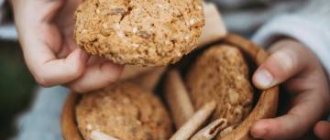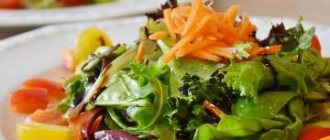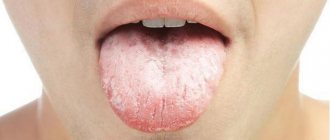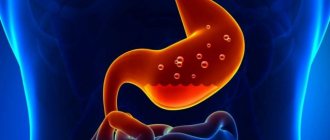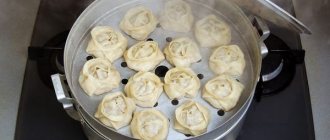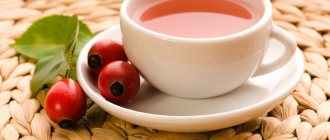| Kruglova Natalya Andreevna, practicing nutritionist , member of the National Association of Dietitians. She graduated from the Ivanovo Medical Academy, after which she specialized in dietetics at the Department of Dietetics and Gastroenterology at the North-Western State Medical University named after. I.I. Mechnikov, St. Petersburg. Deals with issues of proper nutrition, effective and safe weight loss, nutrition for various diseases, including the digestive tract. He is the author of the books “Vegetarianism for Beginners” and “Paleo Diet. Secrets of slimness and health." In 2014, Natalya received the “Best Nutritionist” award from the “Top-25 Diamond” version. |
Menu for gastritis. General principles:
- The diet should be complete in terms of calories and the content of basic nutrients - proteins, fats, carbohydrates, vitamins and microelements.
- Fractional meals - small portions 5-6 times a day.
- Foods rich in coarse fiber are limited and, during periods of exacerbation of gastritis, excluded - beans, peas, unripe fruits and vegetables, gooseberries, grapes, dates, wholemeal bread. Vegetables are preferably in heat-treated form.
- Spicy snacks, seasonings and spices are excluded. Table salt is limited to 6-8g/day.
- Dishes are prepared boiled or steamed or stewed. During the period of exacerbation of gastritis, in pureed form. Frying and baking to form a dense crust is not allowed.
- Avoid dishes containing connective tissue - fatty and stringy meat, cartilage, lard, skin of birds and fish.
- For some patients, it is necessary to exclude milk and dairy products from the menu due to poor tolerance.
- Avoid foods that stimulate the production of hydrochloric acid and are difficult to digest - rutabaga, radishes, radishes, onions, garlic, mushrooms, brown bread, alcohol, canned food, and baked goods.
| In this article: a menu for a week for gastritis, ready-made and proven recipes, a shopping list for the whole week. |
MONDAY
Breakfast: omelet with milk
Lunch: chicken noodle soup; baked apples with cottage cheese
Afternoon snack: cottage cheese casserole with pumpkin in a slow cooker
Dinner: fish balls like in kindergarten + mashed potatoes (excluding lemon juice)
Nutritionist's comment:Omelet is a nutritious dish, rich in complete, easily digestible proteins. When cooking soup, discard the first broth and use onions as tolerated. Baked apples are a delicious and healthy dessert. Baked apples are easier to digest, so they can be used even during an exacerbation of the disease. |
Cucumbers. Let's weigh the pros and cons
The data on such a tasty and popular vegetable in our country as cucumber is very contradictory. American nutritionist, MD J. McDougall believes that cucumbers, although they contain soft fiber, can still cause irritation of the mucous membranes in some patients. And answering the question of what vegetables should not be eaten if you have gastritis, he focuses on fresh cucumbers.
Another US scientist, Jeff Warber, who is a member of the Association of American Physicians and a doctor of natural medicine, called cucumbers a powerful healing agent in the fight against stomach inflammation. Jeff Warber pointed out the vegetable's alkalizing properties, which can reduce stomach acid.
Alas, neither McDougall nor Warber conducted research that could reliably confirm one of the theories mentioned above. Therefore, you will have to make a decision about whether cucumbers are healthy or not together with your gastroenterologist. We advise you to listen to the body’s reaction.
TUESDAY
Breakfast: oatmeal with milk with raisins and apples (exclude spices, raisins as tolerated)
Lunch: chicken noodle soup; baked apples with cottage cheese
Afternoon snack: fruit cocktail with kefir and cottage cheese (I recommend replacing canned apricots with fresh or peaches)
Dinner: fish balls like in kindergarten + mashed potatoes (excluding lemon juice)
Nutritionist's comment:Everyone knows that porridge is an ideal breakfast; it contains complex carbohydrates that keep you full for a long time, and pumpkin will enrich the dish with vitamin A. I recommend that people suffering from digestive system diseases regularly include soup in their diet. It is easily digestible, satiating and helps prepare the digestive system for the next meal. |
Contraindications
Contraindications to such fasting are concomitant diseases of the cardiovascular and endocrine systems, infectious and viral diseases (tuberculosis, hepatitis), oncology, severe anemia, VSD, children and old age.
According to gastroenterologists, if patients with gastrointestinal diseases, including acid-related diseases, follow the principles of therapeutic nutrition, complications are not observed, and there are no risks associated with the diet.
[28], [29], [30], [31], [32], [33], [34], [35], [36]
WEDNESDAY
Breakfast: milk buckwheat porridge in a slow cooker
Lunch: hake soup (do not fry vegetables); risotto with pumpkin and baked veal (excluding frying and garlic)
Afternoon snack: zucchini stewed in sour cream
Dinner: casserole of zucchini and carrots (bake in foil so that it turns out without a thick crust) + chicken cutlets (steamed)
Nutritionist's comment:Try to bake so that a dense crust does not form; it can irritate the walls of the stomach and cause discomfort. |
Low acidity
Due to insufficiency of digestive juice in hypoacid gastritis, fatty foods that are difficult to process are strictly contraindicated. But the advantage is a wide range of permitted vegetables and fruits, both thermally processed and raw.
Lenten buckwheat soup
Compound:
Action plan:
Ratatouille
Ingredients:
Cooking:
THURSDAY
Breakfast: poached egg
Lunch: hake soup (do not fry vegetables); risotto with pumpkin and baked veal (excluding frying and garlic)
Afternoon snack: baked peaches with nuts (use nuts as tolerated)
Dinner: casserole of zucchini and carrots (bake in foil so that it turns out without a thick crust) + chicken cutlets (steamed)
Nutritionist's comment:Try to eat as varied a diet as possible, this will add a maximum of vitamins and minerals to the menu for gastritis. A stomach disease is not a reason to deprive yourself of your favorite dishes; sometimes it is enough to choose the right cooking method, it should be gentle - boiling in water, steaming or baking without forming a dense crust. |
How to cook?
Dietary vegetable stew can be prepared in the oven or in a slow cooker.
Cooking in the oven
First, a few tips:
- For cooking, it is best to choose young vegetables: in addition to being more healthy, the cooking time is significantly reduced:
- The ingredients that take the longest to cook should be placed in the oven first;
- When cooking in molds, use a small amount of oil;
- To protect vegetables from burning, you can cover them with foil.
One of the popular dietary recipes:
- Peel and cut several potatoes into thin slices
- Grind a couple of young zucchini into circles
- Finely chop the cabbage and finely chop the celery and parsley
- Grease the mold with a barely noticeable layer of vegetable oil.
- Place the potatoes as the first layer, covering them with a layer of greens, and after that put the zucchini
- Add water to the pan, cover it with foil and place in the oven.
The stew takes about 50 minutes to prepare at a temperature of 170 degrees.
Cooking in a slow cooker
Such a dish will be even more healthy and gentle, since it is prepared using lower temperatures: vitamins and other beneficial substances will be preserved in greater quantities, and the food will acquire a special aroma and taste.
Ingredients:
- 3 medium sized potatoes
- zucchini
- carrot
- Bell pepper
- dill.
Recipe:
- After washing the vegetables, leave them in water for a few minutes.
- Chop or grate the carrots, and after greasing the bottom of the multicooker with a thin layer of oil, place it there, turning on the heating mode
- At the next stage, the multicooker takes in the diced potatoes, and the cook sets its dial to the “baking” position, fixing the time on the timer - 60 minutes
- Next, slices or squares of sweet pepper go to their “comrades”, followed by cubes of zucchini
- You can also add a little salt
- After adding 100 ml of water to the stew, all that remains is to close the lid and turn on the multicooker for the set period of time
- When the dish is ready, it should be sprinkled with dill.
If we compare these two methods, in the first case the food cooks a little faster, and in the second, thanks to simmering, it will be more flavorful.
FRIDAY
Breakfast: millet porridge with pumpkin
Lunch: kulesh (without frying vegetables); tender salmon sausages
Afternoon snack: frozen cherry and cranberry jelly
Dinner: buckwheat with minced meat (steamed or simmered in a small amount of water)
Nutritionist's comment:Kissel is the best option for consuming fruits and berries; it gently envelops the walls of the stomach and protects them from damaging factors. |
Benefits and harms
Vegetables are the main supplier of vitamins and fiber. They contain carbohydrates, polysaccharides, minerals, and organic acids. Regular consumption of vegetables helps in proper digestion. Essential oils contained in some vegetable crops stimulate the appetite.
Dietary fiber improves intestinal motility, adsorbs toxins, and promotes the removal of excess fluid.
Fiber helps process and absorb heavier protein foods such as meat or fish. With a low calorie content, vegetable dishes create a feeling of fullness for a long time.
The benefits of vegetables can be easily determined by their color. Beta-carotene gives the orange or yellow color. This antioxidant will protect the mucous membrane from erosions and ulcers. Red vegetables help prevent cancer.
Green vegetables are rich in iron, so they are indispensable for anemia, which is a frequent companion to erosive or atrophic gastritis and ulcers. Varieties of potatoes, onions, and carrots that are purple in color are good for the heart and blood vessels.
We should not forget that the benefits of the product are determined by the characteristics of the human body and the presence of chronic ailments.
For example, table beets are contraindicated for kidney stones; garlic will provoke a painful attack of ulcers or gastritis.
Coarse fiber, which vegetables are so rich in, can be dangerous for gastrointestinal diseases.
Therefore, the list of products acceptable for consumption in one case or another will be different for everyone. We have a whole separate section about restrictions on fruit consumption, take a look at it and you will learn a lot of new things.
SATURDAY
Breakfast: oatmeal with milk
Lunch: kulesh (without frying vegetables); tender salmon sausages
Afternoon snack: gelatin fruit jelly
Dinner: buckwheat with minced meat (steamed or simmered in a small amount of water)
Nutritionist's comment:You should avoid black pepper; it stimulates the production of gastric juice and can provoke an exacerbation. |
What is possible and what is not?
So, what can and cannot be eaten if you have hyperacid gastritis?
The following are prohibited: any fatty meat and poultry; salted and smoked lard and bacon; canned meat; salted and smoked fish, including herring; fish preserves and canned food; black and red caviar, as well as seafood - shrimp, mussels, squid, etc.
Fresh bread and baked goods, black bread will not be beneficial for the gastric mucosa; legumes; bran, millet, pearl barley and corn porridge; fermented milk products, heavy cream and sour cream; sharp rennet cheeses; ice cream and confectionery.
Excluded from the menu are fresh white cabbage and sauerkraut (as well as all vegetable pickles and marinades), Brussels sprouts, radishes and radishes, spinach and sorrel, tomatoes and paprika, onions and garlic, fresh fruits with coarse fiber, citrus and sour berries.
You will have to give up dishes such as borscht, soups with meat and fish broth, chicken broth, mushroom soup, bean and pea soup, pickle, vinaigrette, brawn and jellied meat, shish kebab and dumplings.
Tarragon, black pepper, turmeric, ginger and other spices are absolutely contraindicated for gastritis with high acidity. Just like mayonnaise, mustard, horseradish, tomato, mushroom and soy sauce. It is strictly forbidden to eat fast food.
And the list of permitted foods for gastritis with high acidity is included by nutritionists:
- dried bread made from wheat flour, crackers, baked pies with neutral filling (no more than twice a week), unleavened pancakes or pancakes (once a week);
- lean beef, beef tongue, rabbit, young turkey, skinless chicken breast or fillet, chicken liver - boiled, stewed, baked in portions or in the form of steam cutlets;
- vegetable oil (sunflower or olive), unsalted butter;
- low-fat boiled sausage or milk sausages (no more than 60 g per day);
- low-fat fish - cod, tuna, trout, pike perch - boiled and in the form of steamed fish cutlets;
- hard, mild cheeses with a fat content of 30% (maximum 30-45 g per day);
- non-acidic cottage cheese and natural yoghurts with a fat content of 3.2%;
- chicken and quail eggs - soft-boiled, omelet with milk or cream;
- porridge (semolina, buckwheat, oatmeal, rice);
- premium durum wheat pasta (which is placed in soup or as a side dish for main course);
- potatoes (boiled, baked or mashed, fried is prohibited);
- carrots and beets (boiled);
- cauliflower and zucchini (stewed or steamed);
- pumpkin (mashed potatoes, as well as in cereals or desserts);
- sweet apples (including baked ones), ripe pears (without peel), peaches, melons, bananas.
SUNDAY
Breakfast: buckwheat casserole with cottage cheese (bake under foil)
Lunch: salmon soup; Potato casserole with minced meat in a slow cooker
Afternoon snack: gelatin fruit jelly
Dinner: chicken soufflé with steamed carrots in a slow cooker; boiled rice
The menu for gastritis was compiled taking into account the principles of the “Menu of the Week” system.
As drinks you can use weak green and black tea, herbal teas, compotes of dried fruits and non-acidic fresh fruits and berries, jelly. I recommend juice only in diluted form, in a ratio of 1:2 - 1:3; in undiluted form, it has an irritating effect on the gastric mucosa. The same applies to fruit drinks. As for alcohol, it has an aggressive effect on the digestive system, stimulates the production of hydrochloric acid, which can cause exacerbation and worsening of the condition. You can add fruits to this menu, such as bananas, ripe apples, pears, peaches, apricots. Dairy products - yogurt, kefir, cottage cheese - this will be a good snack option.
Features of the diet for gastritis
A patient with gastritis should have a complete diet. Nutrition for gastritis should be varied, but at the same time gentle. The food consumed should not have a harmful effect on the areas of inflammation.
In addition, it should be easily digested so that the organs do not have to work under increased stress. Basic principles of diet for stomach disease:
- Mechanical sparing. In the acute phase, pureed dishes with a semi-liquid consistency should be consumed. Ideal types of food are pureed soup, liquid pureed porridge, meat or vegetable puree. But hard foods, such as nuts, as well as foods containing coarse fiber, should be excluded. The patient's diet should not include baked goods made with bran, certain types of vegetables (rutabaga, radish), or stringy meat. Dishes with fried or baked crust are strictly excluded.
- Thermal sparing. Ideally, food served to the patient should be at body temperature. Therefore, hot dishes should be eaten slightly cooled, the optimal temperature is 38-40. You will have to give up the habit of drinking hot tea, you need to let the drink cool. But cold dishes also irritate the mucous layer, so it is better to avoid ice cream.
- Chemical sparing. All spicy and sour foods are removed from the diet. Alcohol-containing drinks are strictly excluded.
Recipe for cooking in the oven
This dish is incredibly tasty, although dietary. Suitable for any diseases of the gastrointestinal tract. Use quality products; ideally, it is better to grow your own vegetables.
To prepare, take:
- 400 g – chicken or turkey mince;
- 60 g – melted butter;
- 100 g – stale black bread;
- 1 – egg;
- 1 – medium carrot;
- ½ cup – milk;
- half a bunch of carrots and parsley.
- Pass the meat through a meat grinder; if there is any skin, remove it. To make the minced meat fine, twist the meat several times.
- Soak the bread in milk and add to the meat.
- Finely chop the greens and grate the peeled carrots.
- Combine all ingredients by adding an egg.
- Form into patties and pour melted butter over them.
- Bake in the oven until golden brown, or cook in a double boiler.
If you bake cutlets in the oven, you can make a breading with crackers. Best served with oatmeal or boiled vegetables.
For the holiday table
Setting a festive table so that a person with gastritis does not feel out of place at it is a completely solvable task. If you use your imagination, you can come up with a huge number of dietary holiday dishes. And we are talking not only about hot food, but also about cakes.
Rainbow trout with fennel
Compound:
Recipe:
Curd banana cake
This is a diet cake without adding eggs, cream, or butter. Let’s immediately make a reservation that you can only eat it in small portions and during the remission stage.
You will need:
How to cook:
Candy-lambs
Of course, from time to time we all want to treat ourselves to sweet desserts: cakes, cookies, pies and buns. Unfortunately, traditional cakes and pastries for gastritis of any form are prohibited. However, many baking options will certainly suit your taste.
In case of inflammation of the stomach, dishes made from uneatable dough, dry cookies, and biscuits are allowed. Of course, biscuits can hardly be called a delicacy. But apple pies, carrot cookies, and cottage cheese casseroles are quite suitable for this definition. Or you can make healthy cookies based on oatmeal.
Oat cookies
Ingredients:
Action plan:
